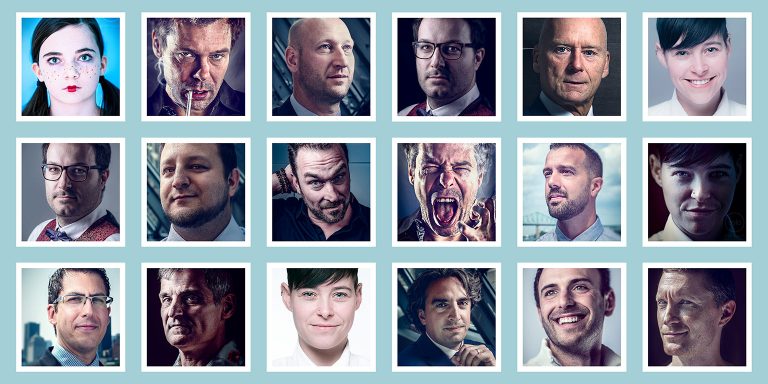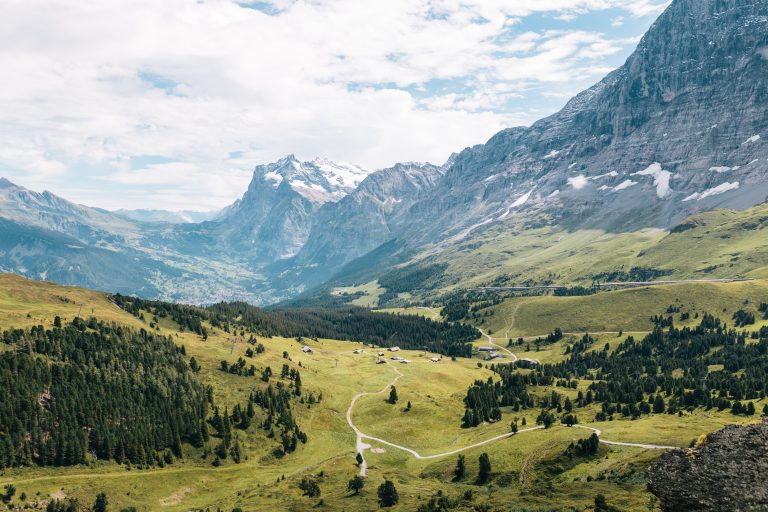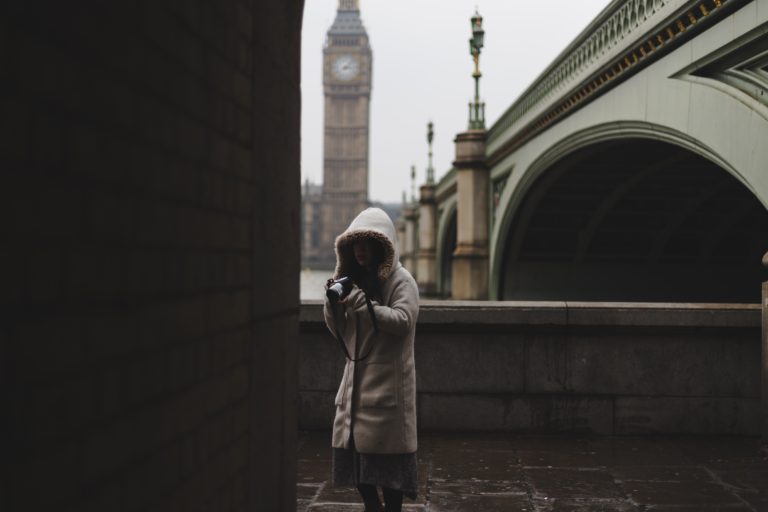Creative Portrait Photography: Adding a Unique Twist to Portraits
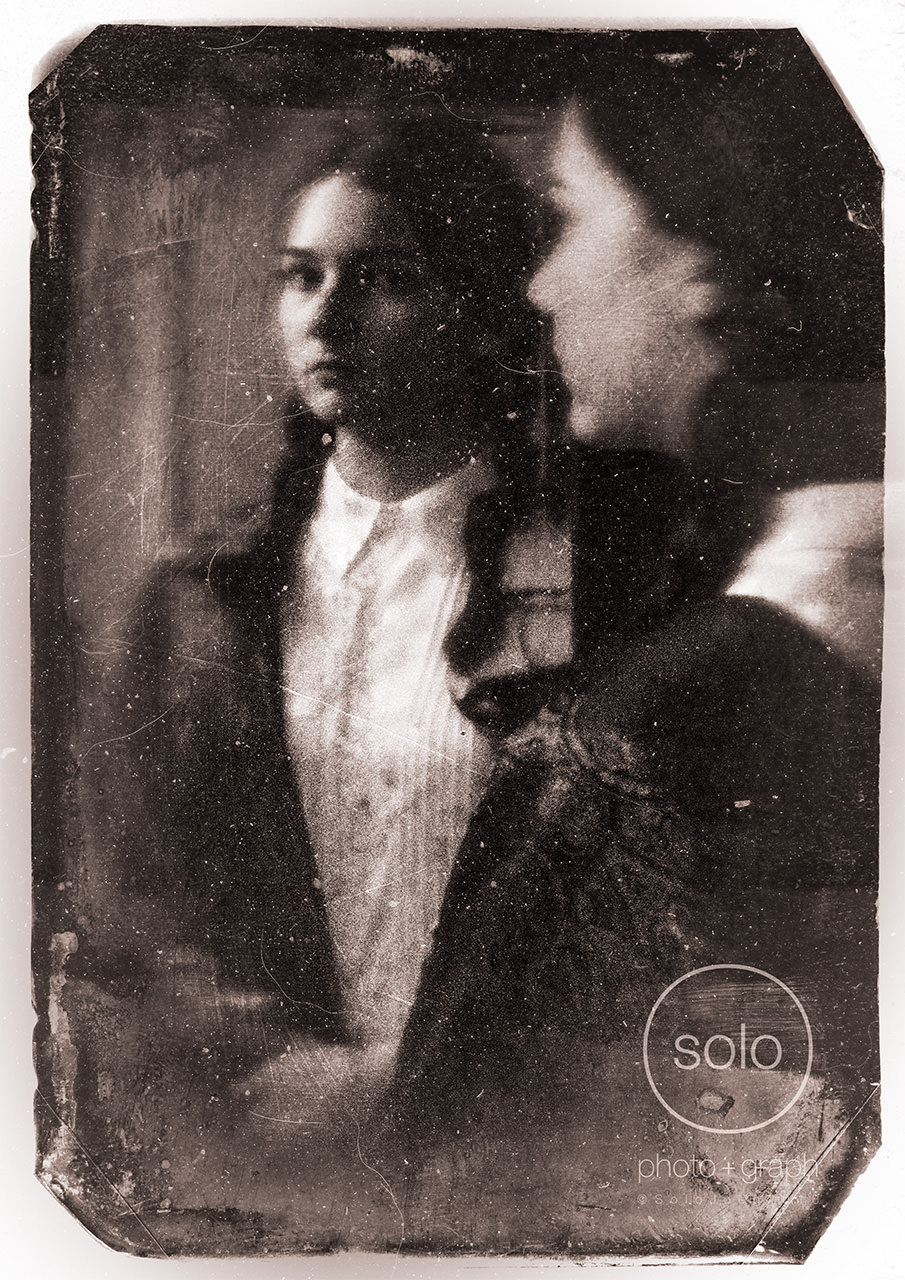
Creative portrait photography comes in many forms.
From a simple touch of color grading for a more cinematic look to elaborate post-work creating a contemporary piece of conceptual art, the umbrella is huge and the sky of imagination is the limit.
In the end it’s all about adding a little, or more depth to your portraits, breaking away from the plain studio headshot, and telling a story.
In this article I will show several techniques how you can add some creativity to your portrait photography, hold on to your beverage and off we go…
To elevate your photos from a flat snapshot to a work of art and everything in between you can start by simply playing with colours and textures, to spice up that otherwise plain and static form. Another option is to incorporate much more of the environment and create a harmonious symbioses between subject and surroundings.
It’s all up to you, let your creative beast roam free and explore!
But I’m getting ahead of myself, lets start simple and slowly expand on this.
Creative Portrait Photography Lighting
Studio limitations
Of course a studio setup doesn’t mean there’s no room for creativity.
By using backdrops, props and costumes, for example.
But I personally just love to shoot on location, in- and outdoors. Admittedly also due to lack of studio space (and being a cheapskate who doesn’t want to spend a dime on renting… Hey! At least I admit it!).
Here are some examples of lifting that plain old studio type of shot off the ground by adding color toning, playing with contrast and supplementary grain to create a more cinematic look and feel. Since this look is so engraved in peoples brain from bingeing way too much Netflix, it immediately speaks to the crowd, there’s familiarity and makes you believe this person could be a movie star.
I should maybe add, both these models actually ARE actors, so in this particular case it made sense to have a couple of cinematic shots in their headshot and acting portfolios.
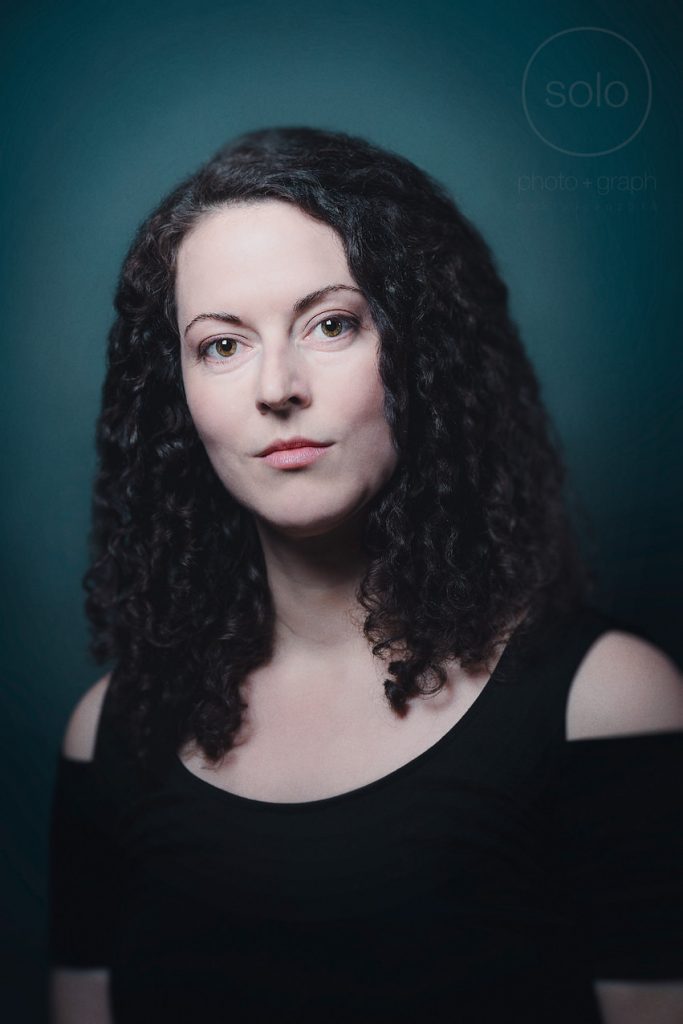
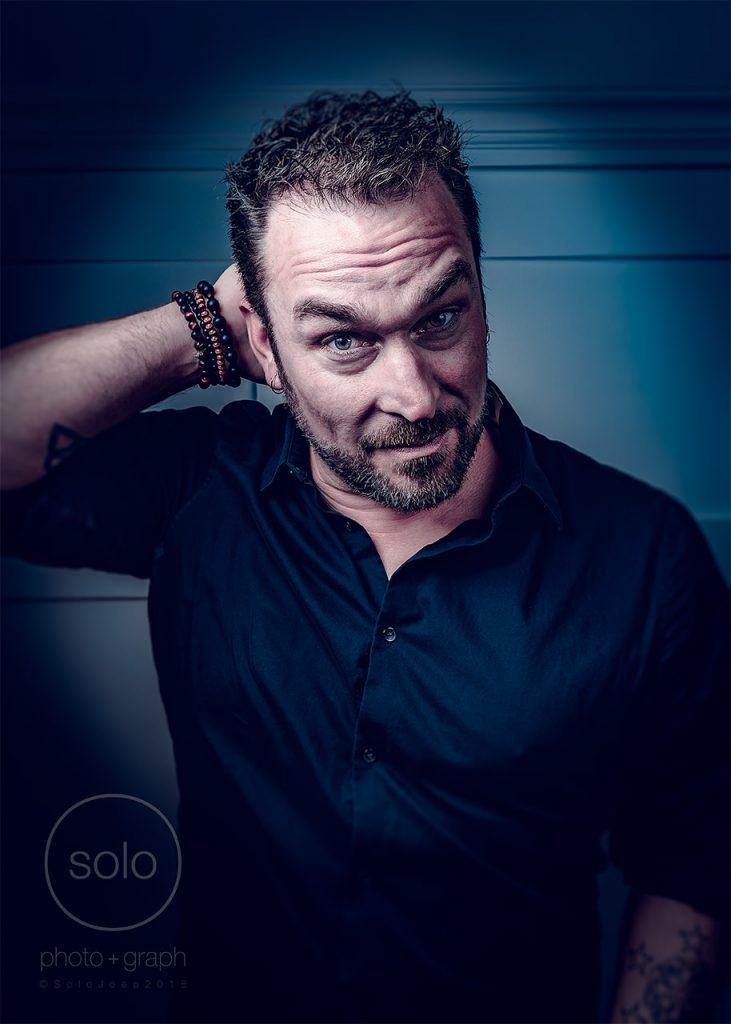
Sometimes the creative aspect comes from the subject itself, and no intensive post-work is needed at all.
The below example, not an actual studio shot, was really just a snapshot of one of my daughters dressing up for Halloween sitting on the bed in her room, lit by daylight coming from a window on the left. The fact she’s decked out with makeup, hair and costume plus the color of the walls working together nicely composes a great creative portrait in itself, without needing much additional post-work.
Natural Window Light.


But, sure, go nuts if you want and take this image to another level entirely. Obviously at this point it could have been pretty much anyone in this portrait, the original is barely recognizable, and the fact she was all dolled up doesn’t add much to this image, besides the lipstick and fake freckles.
Post-Processing & Framing
Personally I’m a big fan of using vintage manual prime lenses, and being creative in usage of (often DIY) modifiers and sticking to very simple lighting setups. And I also just love the look of good ol’ wet plate photography. Problem is though, I have no patience for elaborate developing techniques and having to clean up after playing with chemicals (thank you ADHD! Oh look a squirrel!!).
So to satisfy this hunger and somewhat comply to my inner wish of being the photographer who shot Billy the Kid (with a camera mind you, I’m a total pacifist!), lately I’ve been experimenting using a pinhole lens combined with a strobe, to eliminate long exposure times, and developed a post-processing technique in Photoshop to create some interesting results.
Sure, it’s not the real deal, but I’m only half faking it. However lomo hipster purists may want to look away for a moment..
This shot uses 1 small soft box containing a simple speed light.

Another interesting aspect of this image is the way the subject is framed in the picture. AKA ‘a frame within a frame’.
It is a very interesting and simple technique to add depth, composition and meaning to your image.
Honestly I believe this technique is worth an entire blog post of it’s own, since there’s just too many examples and different ways it can be used to imply many different levels of emotion. One thing’s for sure, it immediately adds just so much impact to an image.
Go out and explore, there’s frames everywhere!
Another easy way to add a little more genius to your image without looking for the ‘frame within a frame’ solution is to keep some element in the foreground of your subject, slightly or more out of focus.
Depth of field is a great and easy way to create, well, depth.. It’s obviously not framing the entire shot, but it definitely creates more layers and puts the focus on the subject even more, without effort.

Dramatic Lighting
Getting creative and adding some fancy-ness to your photos doesn’t at all mean you need to master photoshop. Exploring how to light your subject to add some drama, using coloured cells and modifiers makes for very pretty pictures, in camera, without any extensive post-trickery work.
Whats also great about these dark and dramatic shots is you do not need much space to pull these off.
The model is lit by a strobe only, and by making sure your camera doesn’t pickup any ambient light (low ISO, high shutter speed), the environment will appear as black. The viewer will never know whether this was shot in a tiny space or empty aircraft hangar, the result is the same.
By using modifiers you can direct the light precisely—for example to add a thin edge of light—AKA rim light, around the subject to make it POP off the solid black environment.
The principle of blocking out ambient light can of course easily be applied to any of the ‘5 classic portrait lighting setups’: flat / paramount (or butterfly) / loop / Rembrandt and makes for interestingly dramatic portraits pretty much instantly.
Bonus tip: want more drama go black & white people!


The shot of the man only uses one soft box at the left and a reflector on the right to bounce back some light onto the shadow side.
The other shot uses a soft box on the left covered with a 1/2 CTO (Color Temperature Orange) gel and another soft box on the right with a full CTB (Color Temperature Blue) gel to create the half orange half blue effect on the model.
Color gels are great fun to experiment with and an inexpensive way to add a creative touch!
Editorial Portraits
Not everyone is an aspiring movie star however, or in for some crazy experimental artsy-fartsy headshot for their business profile, obviously, and frankly (unfortunately for my inner artist maybe?), most of my subjects aren’t.
Business people cover a large area of my client base, and a great way to add a little creativity to their daily routine can be achieved by shooting them in their ‘natural habitat’, often referred to as editorial portrait photography.
Besides adding an interesting environment, the portrait immediately provides a clear understanding of what this person does for a living, their passion, function, level of importance and even vision.
This can be achieved by either capturing the scene in one single photograph, perhaps by simply shooting the CEO in from of the office building, showing their logo in the background.
If it’s the mayor, why not use the skyline of the city they proudly serve as a backdrop?

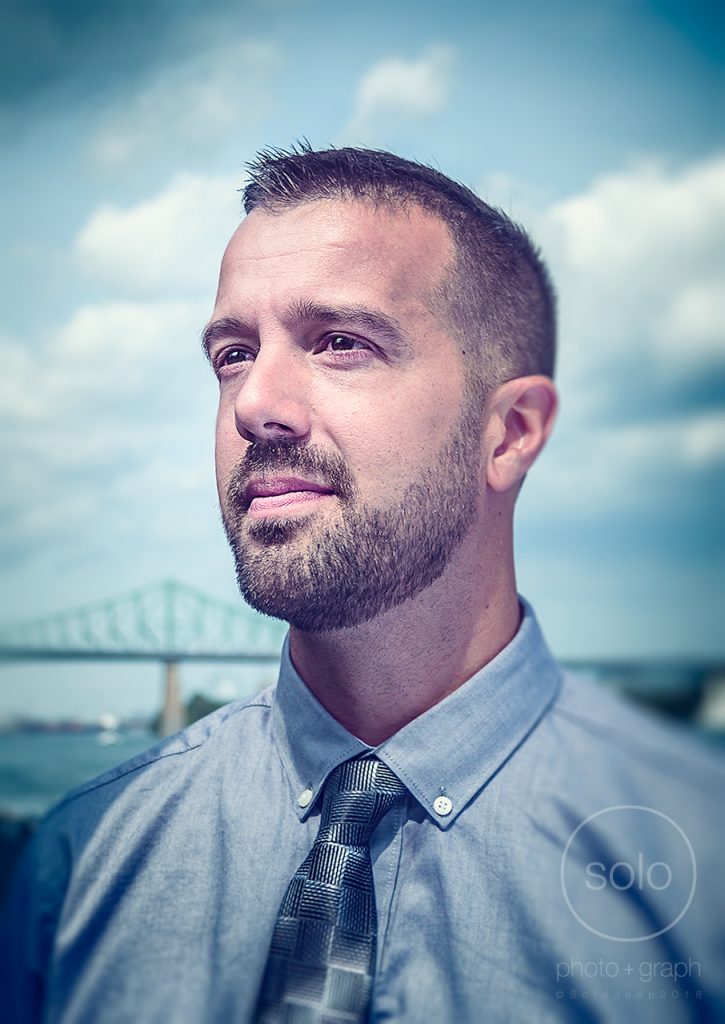
Note the above photo showing the CEO in front of his company logo. We actually just returned from an outdoor shoot, and I really wanted to capture him in front of this wall at the receptionist’s desk, which hadn’t been discussed beforehand.
It was a quick unplanned snapshot taken using only 1 light (simple speedlight inside a DIY softbox) top right plus a reflector at his left both held up by two of his employees for my assistant had already taken off.
Gladly he granted me 2 more minutes of his time and I got the shot. As a thank you I delivered it as a free bonus (plus the rights to use it in my portfolio).
Let me elaborate a bit more on what I just mentioned above; ‘free + rights to use the image in my portfolio’.
It may sound odd to offer free work, and I would not advise to work for free.
We need to be paid for our professional work, of course, and you don’t want to make a name as that ‘cheap’ photographer who does anything for less.
It’ll stick and can be a very difficult reputation to shake off. However, in my experience it can be beneficial to both parties to do some free work here and there. For example when you’re just starting out, still learning, and need to build a portfolio. Your family got tired of you asking to model over and over and frankly having only your mom in your portfolio repeatedly raises questions.
I do shoot free work, I still do, if this means I can get my name out there by for example shooting an event as a volunteer and hand out flyers for my business. Or for example I’ll photograph someone I admire, such as an artist, and request my name to be added each time the photo gets published, plus a link back to my site for Google SEO points, both parties can gain from it.
The photo besides it actually came from the outdoor shoot mentioned earlier.
You could of course shoot purely using natural light, but personally I like to shape it a little more, give it an accent, by adding an additional light source. This can either be a reflector, speed light or strobe, depending how bright the natural source is you’re working with (or want/need to overpower).
In this case I also needed to tone down the sunlight for it was a horribly sunny day, and the worst time to go shooting outdoors, midday! Lunchtime was a good time for this client, not so much from a photographers perspective maybe but I had to work with it.
I’m using a DIY variable ND filter to block out the sunlight so I could expose for the background.
Lighting setup is the same as for the indoor shot, one simple speed light plus reflector.
The sun was so bright that day I could not spend too much time with each model for their eyes just started tearing up from the sunlight reflecting back into their face. But we got it done, and all cried at the end, tears of… sunlight.
If you’re interested in honing your craft for corporate portraiture work, we also have an article on corporate portrait lighting.
Telling a Story Through Multiple Images
By creating a series of images to expose the process of someone’s work you can really pull the viewer into this individual’s daily life.
This obviously isn’t as interesting if your subject is an accountant staring at numbers all day or someone bound to meetings 24/7, however if for instance your client creates artisan toothbrush holders carved from local beaver tooth, which is an obviously unique process just begging to be engraved into peoples parietal lobe, please pull that camera out, frame it, and show it off!
This also works well with other local artisan products, as can be seen in the example below.

Telling a Story Through a Single Image
Different ways to portray the person may include a static portrait where the subject poses in front of the camera while at work. Or while working, so the viewer gets to peek into their life, creating a more casual and candid quality.

Personally I like the raw and dirty look after a hard days work, and the contrast of posing in front of the camera.
You can just feel the pain and longing for that well deserved shower at the end of a hard day’s work!
It reminds me of vintage shots of miners or factory workers around the industrial revolution or factory workers during wartime, there’s something about the blood, sweat and tears transcending from those images.
The contrast of back breaking labour hidden behind the convenience it serves in everyone’s daily lives is truly fascinating.
Something to keep in mind…
As a photographer I feel it’s part of our duty to tickle people’s awareness, empathy, solicitude and respect. To provide that window to expose the world not everyone gets to see, and wake people up a little, pull them out of their bubble.
Creative portrait photography is one way to do that, if not just brighten someone’s day or inspire them.
Society seems constantly in a hurry, running towards unrealistic goals blinding us to see the smaller AND bigger things around us that truly matter. A pretty picture has the power to stop us in our tracks and be grounded, at least for a moment, which is the priceless gift we can provide.
So get out there, document the world, tell a story and be creative, if not for everyone else to see, do it for yourself. One way or another you’ll receive appreciation and satisfaction for doing so, one creative photo at a time…
…Drops mic, climbs down soapbox, rides into the sunset…



